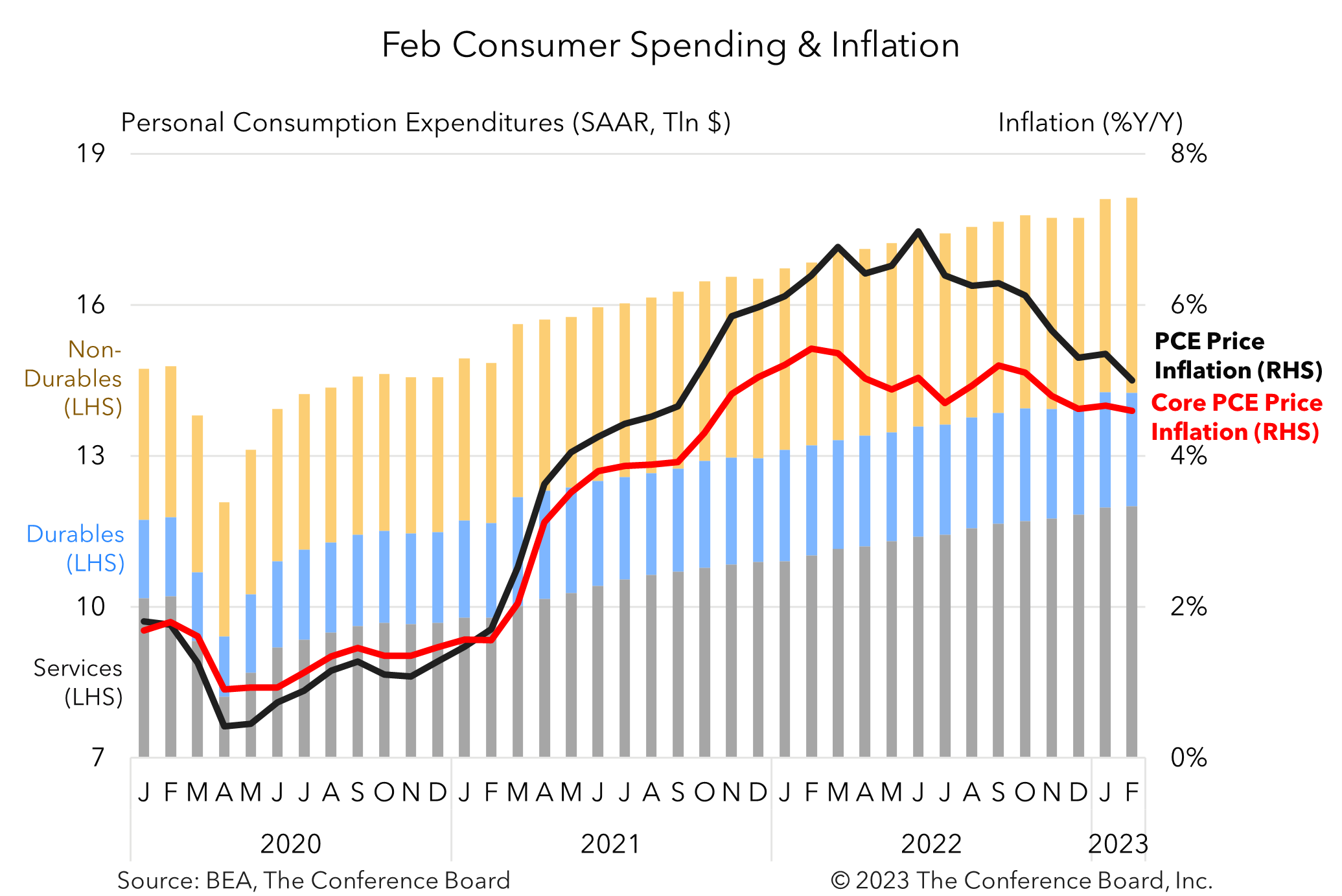
February income, spending and inflation data cooled following a spike in January. Real consumer spending fell by -0.1 percent month-over-month (m/m) following a 1.5 percent spike in January. Meanwhile, inflation metrics for February also cooled. Headline PCE price inflation fell to 5.0 percent from a year earlier and dropped to 0.3 percent in month-over-month terms. Core PCE price inflation also saw softer numbers for the month. Personal incomes rose by 0.3 percent from the month prior, but were roughly flat after adjusting for inflation. Collectivity, this report appears to show that the economic cooling trend seen in late 2022 has resumed following a spike in spending and prices in January. The Federal Reserve will welcome these data as it winds down its Fed Funds tightening campaign. We forecast two more 25 basis point interest rate hikes and do not expect to see any rate cuts until 2024. However, we do not think the Fed will deviate from the quantitative tightening campaign that it launched last year. It is also important to note that these data do not incorporate the impact of the recent banking crisis, which took place in early March. Looking ahead, we expect spending, income and inflation data to continue to soften as the US economy slips into a short and mild recession. Headline PCE price inflation fell from 5.3 to 5.0 percent year-over-year (y/y) in February and core PCE price inflation (which excludes food and energy) fell from 4.7 to 4.6 percent y/y. On a month-over-month basis, headline PCE inflation fell from 0.6 percent to 0.3 percent while core PCE inflation fell from 0.5 percent to 0.3 percent. Prices for services and non-durable goods rose for the month, contributing to inflation, but prices for durable goods fell. Importantly, prices for services rose by just 0.3 percent m/m, the smallest increase since July 2022. Overall personal income rose 0.3 percent m/m (in nominal terms) in February, vs. 0.6 m/m percent in January. However, when factoring in inflation the real growth month-over-month growth rate was 0.1 percent. Meanwhile the savings rates rose to 4.6 percent of disposable personal income. Personal consumption expenditure rose by 0.2 percent m/m (in nominal terms) in February, vs. 2.0 m/m percent in January. Spending on services rose by 0.2 percent m/m while spending on goods was flat. However, after accounting for inflation, real consumer spending was -0.1 percent m/m in February with spending on goods falling 0.1 percent m/m and spending of services falling 0.1 percent m/m. Inflation
Incomes
Spending

Fed Doves Get Nice Holiday Gift as CPI Inflation Drops
December 18, 2025
FOMC Decision: Do Three Dissents Mean a January Pause?
December 10, 2025
Fed December Decision: Not So Clear Cut
December 09, 2025
September Inflation Pause Bodes Well for Fed Cut
December 05, 2025
September Retail Sales Show Consumers Taking a Breather
November 25, 2025
New Truce Offers Stability after US–China Trade Plummeted in 2025
November 05, 2025
